European Skipper (Thymelicus lineola)
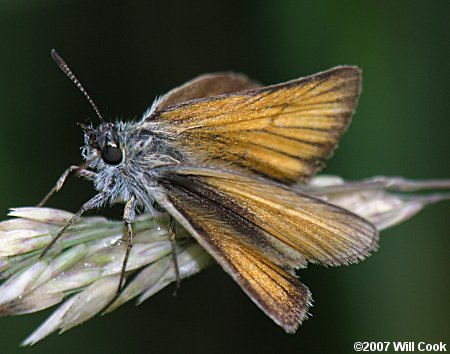
| Very rare in North Carolina, European Skipper is known only from a few spots in the northwestern corner of the state. This small butterfly, known as the Essex Skipper in Europe, was first discovered in Ontario in 1910 and has spread rapidly through the northern states, where it sometimes is incredibly abundant. Ashe Co., NC 7/6/07. |
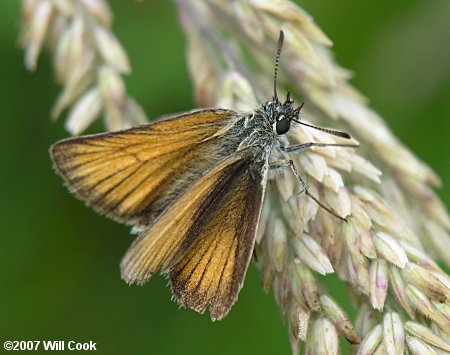
| The range expansion seems to have stopped in northwestern NC. First discovered in NC in 1993, it still has only been found in two counties along the Virginia border -- there is no sign of range expansion or population increase in the state. Essex Skipper has a very wide range, occuring from southeastern England to northern Africa, east through Russia. It is possible the population in North America may not be able to tolerate a hot climate because it comes from a single source, which had to adapt to the Ontario climate. Ashe Co., NC 7/6/07. |
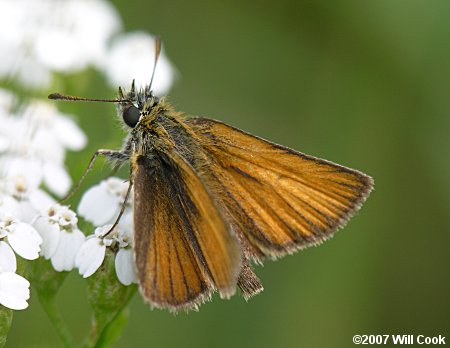
| Bright orange when fresh, the ones photographed here are fairly worn. The upperside pattern could possibly confused with that of a small male Delaware Skipper. Male, Ashe Co., NC 7/6/07. |
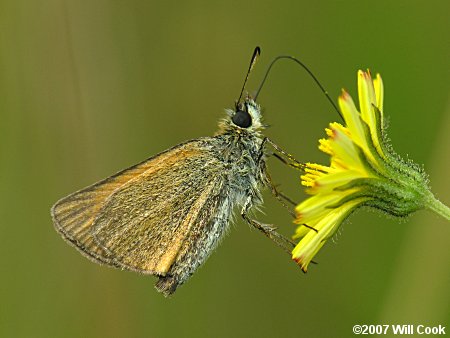
| Male, Ashe Co., NC 7/6/07. |
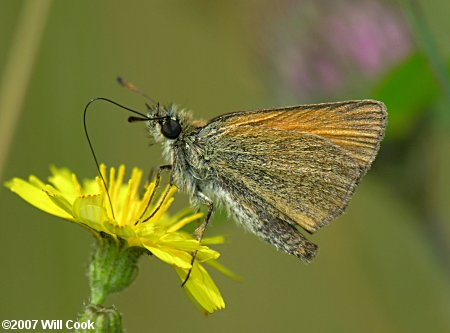
| Male, Ashe Co., NC 7/6/07. |
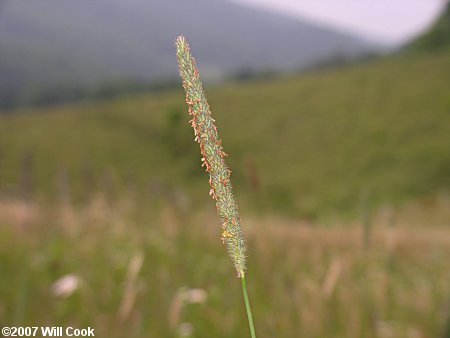
| Typical habitat is a hay field with mixed tall grasses and lots of Red Clover, a favored nectar source. The main foodplant is reported to be Orchardgrass (Dactylis glomerata). Other commonly used host grasses include Timothy (Phleum pratense) (pictured at left) and Velvetgrass (Holcus lanatus). These are all European imports themselves. Ashe Co., NC 7/6/07. |